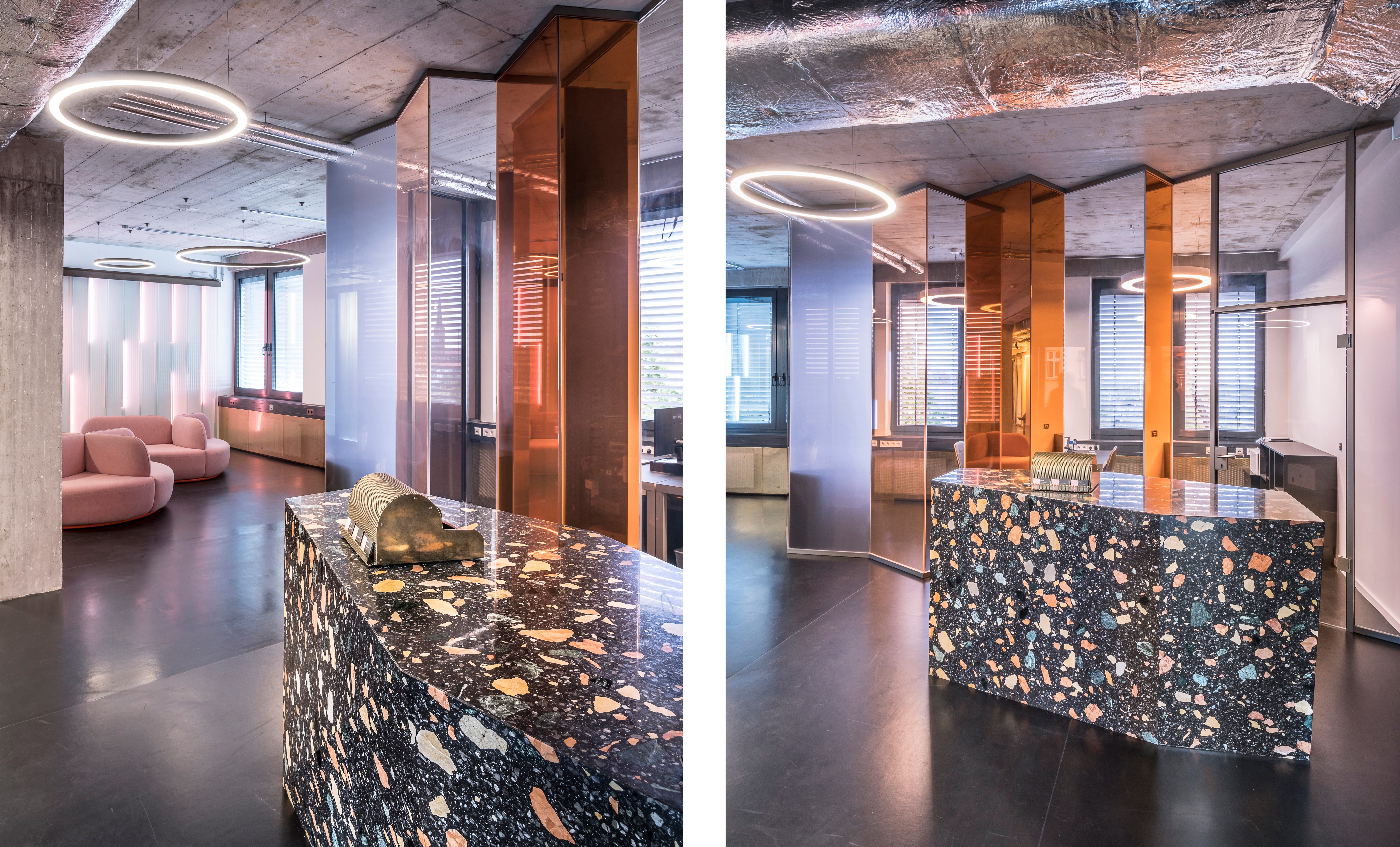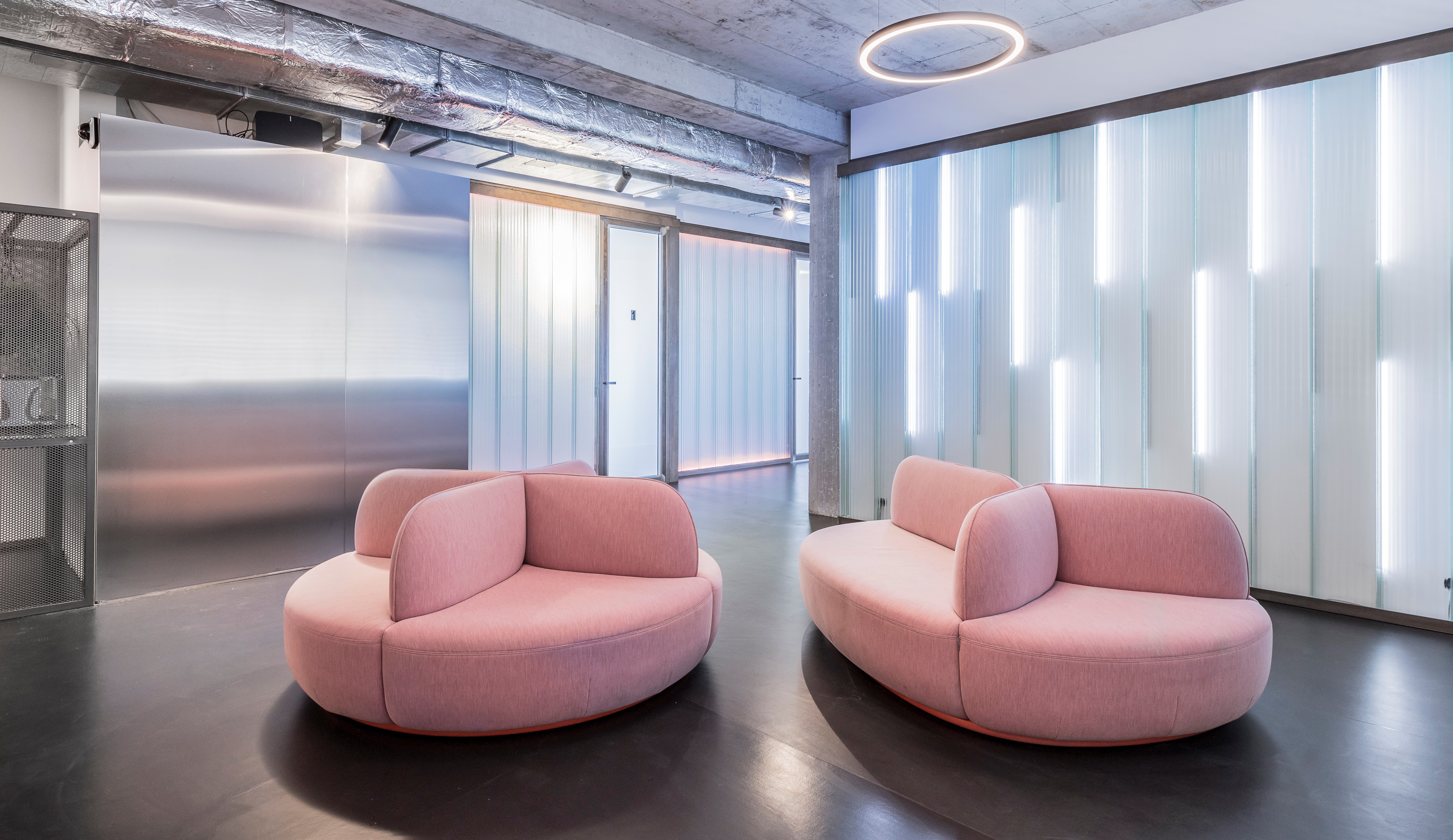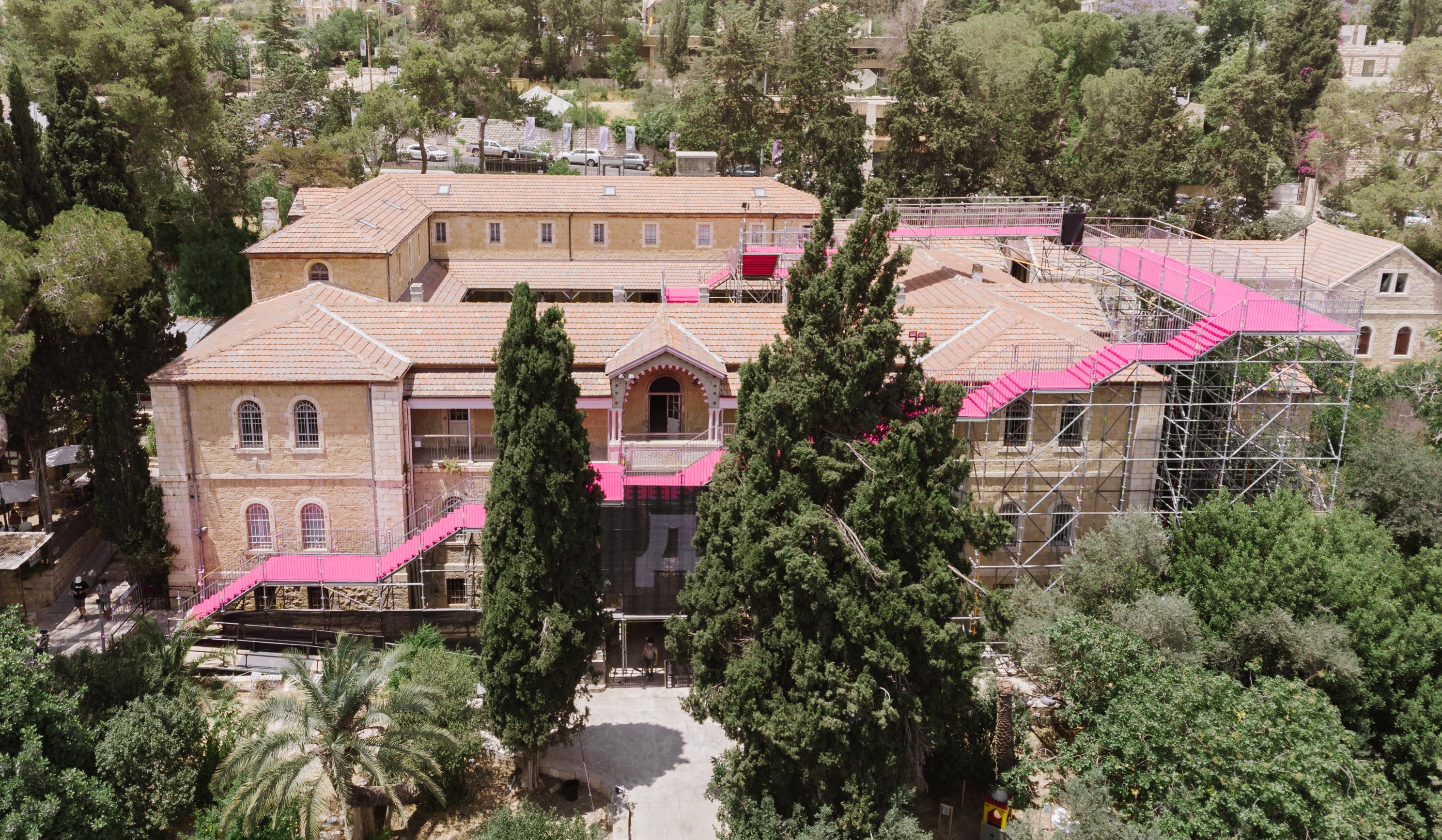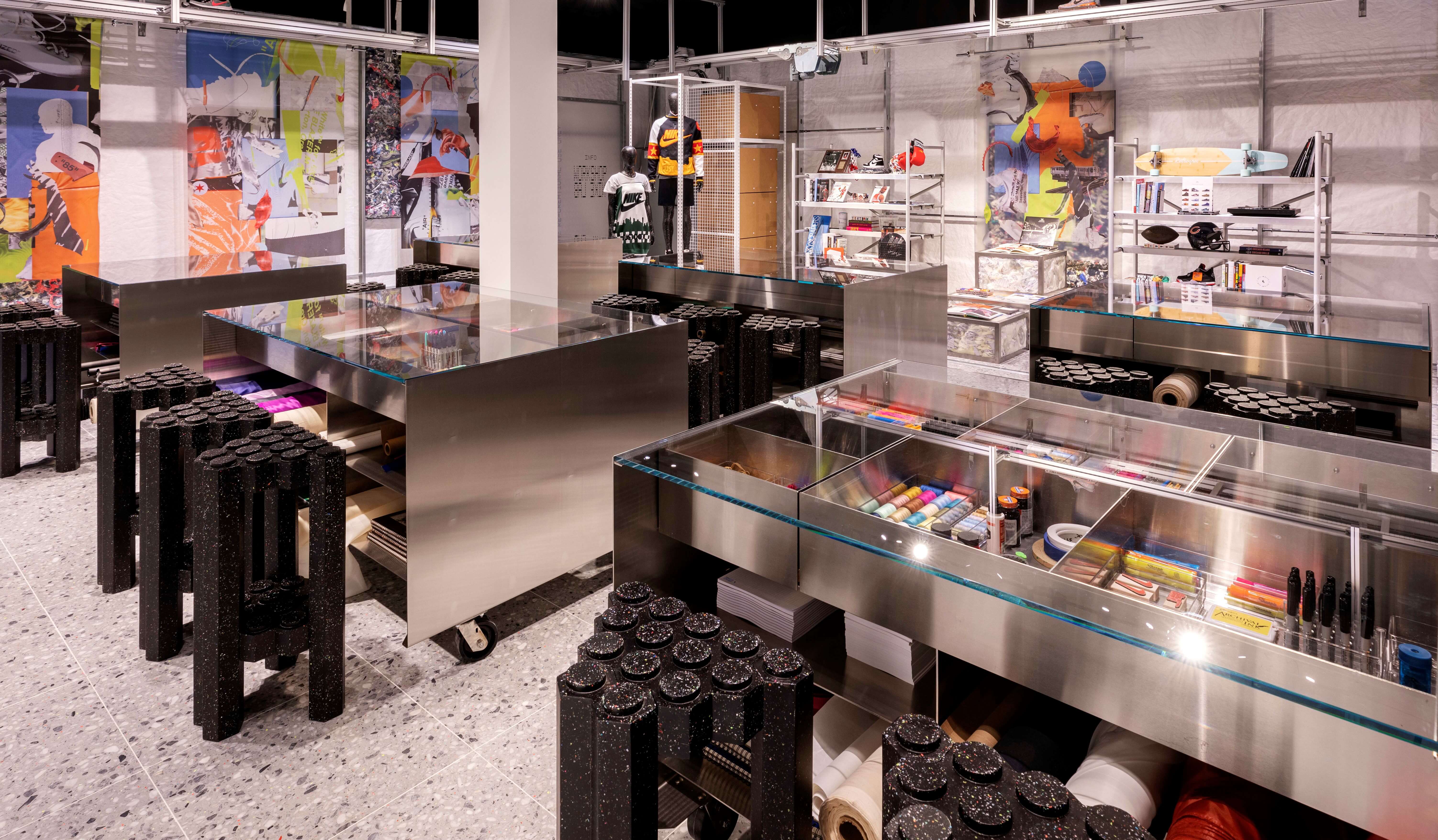Recently, we looked at how the wellness industry is impacting the design of clinical spaces, for example. We used our archive of recent projects – including, for example, Berlin’s The Urban Dentist by Studio Karhard – to identify the key aesthetic trend. Then, we challenged a semiotics agency to unpack its design codes.
We are also interested in how innovations are impacting the design of spaces, potentially even leading to the creation of completely new opportunities for spatial designers. Can they, for example, help with the adoption of virtual reality experiences by improving the qualities of the real paces that enable them? Interior architecture students at HEAD Genève are among the designers that recognised the potential for new spatial archetypes in and around VR, and designed physical furniture that supports and enhances virtual experiences.
The Urban Dentist by Studio Karhard, photographer © Stefan Wolf Lucks

The advanced Sustainability
I think big companies have the means to help certain innovations become more mainstream by making them available for wider audiences. Recently, sportswear brand Nike teamed up with the London-based school Central Saint Martins to create an open-source sustainability guide in which they share learnings about circular practises with the industry. Designers and brands can use it as a kind of toolkit.
Nike has a big reach with consumers too. So if they take on the role of educator and help consumers understand the impact of their choices, there is a lot to gain. Even though I’m aware such brands primarily have commercial interests, I do believe there is a bit of responsibility involved. But we are seeing moves into the right direction, like the NikeLab Chicago Re-Creation Center. The pop-up doubled as a recollection depot by encouraging customers to bring in their old kicks. Those in good shape were donated to other causes, while the unsalvageable were sent off for recycling and find a new life in running tracks, sports courts and shop interiors.
90 Degrees by HQ Architects for Jerusalem Design Week. Photographer © Dor Kedmi.

Another interesting player is Ikea, that sponsors the Copenhagen-based ‘future-living lab’ Space10. This team of future-forward thinkers describes their work as ‘research[ing] and design[ing] innovative solutions to some of the major societal changes expected to affect people and our planet in the years to come’. If furniture giant Ikea would adopt some of those solutions and process them into their consumer products, imagine how many households they could reach (and ‘influence’).
So even though I think the actual ‘trendsetting’ doesn’t necessarily happen in the commercial sphere, big companies can promote and enable mass adoption of helpful innovations by sharing their skills, reach and knowledge.
NikeLab Chicago Re-Creation Center pop-up. photographer © Dorothy Hong courtesy of Nike2

Floor Kuitert about her job
In my position, I source and curate content, edit and write articles, brief and liaise with freelancers, set up photoshoots and work closely with Frame‘s in-house graphic design team to ensure visuals and copy come together in the final product. There are very exciting aspects of the job, like traveling around the world – from Paris and Stockholm to Cape Town and, most recently Jerusalem – to attend international design weeks, events and fairs and interview creatives from all kinds of disciplines. Doing so really helps in getting a feel for the topics and issues dominating the design conversation locally and globally.
In addition, as the company is broadening its scope and starting to offer a wide range of creative services, I get the chance to work on everything from curated exhibitions and video productions to speaker series and trend briefings. So it’s a super diverse job that means a lot to me, as it brings me into contact with so many different people and their perspectives.






